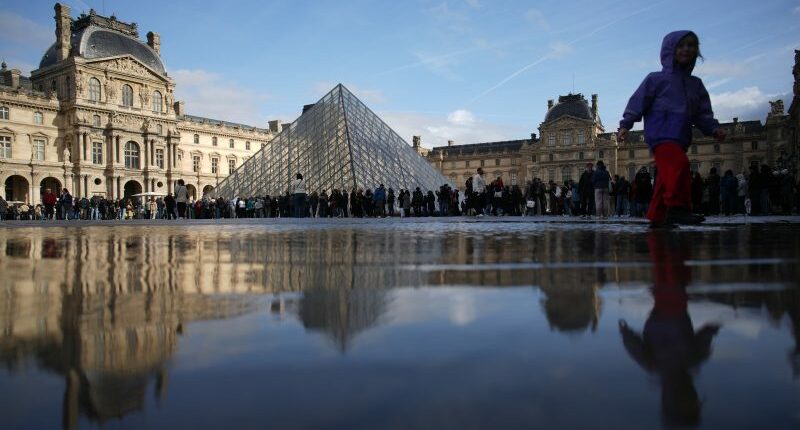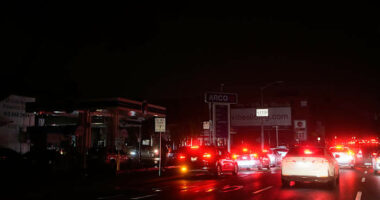Share this @internewscast.com

PARIS (AP) — Authorities have apprehended five additional suspects linked to the audacious heist of crown jewels from the Louvre Museum, yet the valuable artifacts remain unaccounted for, as announced by the Paris prosecutor on Thursday.
The arrests occurred late Wednesday during separate police operations conducted in Paris and its surrounding areas, including the Seine-Saint-Denis region, according to Prosecutor Laure Beccuau, who shared the information with RTL radio. The identities of the detained individuals and other specific details have not been disclosed.
Among those detained is an individual believed to be part of the four-person team responsible for the bold theft at the Louvre’s Apollo Gallery on October 19. Earlier, authorities detained two other suspects from the team, who have since been preliminarily charged with criminal conspiracy and theft by an organized gang. According to the prosecutor, both suspects have partially confessed to their roles in the crime.
“Despite searches conducted last night and into the early hours, the stolen items have not been recovered,” Beccuau stated.
The heist, executed in under eight minutes, saw the thieves making off with jewels valued at 88 million euros ($102 million), stunning observers worldwide. The robbers managed to break in through a window, use power tools to cut into display cases, and escape with eight pieces of the French crown jewels.
This brazen daylight robbery has exposed significant security lapses at the Louvre, sparking a national debate in France about the measures in place to safeguard its cultural treasures.
One of those who has been charged is a 34-year-old Algerian national who has been living in France since 2010, Beccuau said. He was arrested at Charles de Gaulle airport as he was about to fly to Algeria with no return ticket. He was living in a suburb north of Paris, Aubervilliers, and was known to police mostly for road traffic offenses. His DNA was found on one of the scooters used by robbers to leave the scene, she said.
The other suspect, 39, was arrested at his home in Aubervilliers. The man was known to police for several thefts, and his DNA was found on one of the glass cases where the jewels were displayed and on items the thieves left behind, she added.
Video surveillance cameras showed there were at least four people involved, Beccuau said.
Four of the suspects arrived onboard a truck equipped with a freight lift that two of them used to climb up to the museum’s window. The four of them left onboard two motor scooters along the Seine River toward eastern Paris, where they had some other vehicles parked, she said.
Beccuau said nothing suggests that the robbers had accomplices within the museum’s staff.
She made a plea Wednesday night to those who have the jewels: “These jewels are now, of course, unsellable … Anyone who buys them would be guilty of concealment of stolen goods. There’s still time to give them back.”
Information about investigations is meant to be secret under French law to avoid compromising police work and to ensure victims’ right to privacy. Only the prosecutor can speak publicly about developments, and violators can be prosecuted. Police and investigators are not supposed to divulge information about arrests or suspects without the prosecutor’s approval, though in high-profile cases, police union officials have leaked partial details.












